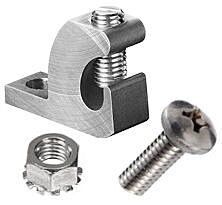MisterCookEMann
New Member
- Joined
- Aug 30, 2020
- Messages
- 18
I have 400 watts in Solar Panels installed on the roof of my canned ham camper that I am building. I have been watching Prowse's videos, and I have not seen him mention grounding the panels for his systems. But I have seen some videos of other people grounding their panels. My panels are not in contact with the trailer skin because I used petty tape between the brackets to ensure no leaking, but I could easily add a ground and connect, or maybe they are already grounded just from the bolts going through the skin? Anyways, I'm confused. Can Someone help me?
The set up I went with are solar panels charge Bluetti AC200, then that feeds my 12 volt trailer system in the trailer as well (which is very minimal, lights, fan, maybe a cooler at some point. That's it.
The set up I went with are solar panels charge Bluetti AC200, then that feeds my 12 volt trailer system in the trailer as well (which is very minimal, lights, fan, maybe a cooler at some point. That's it.



